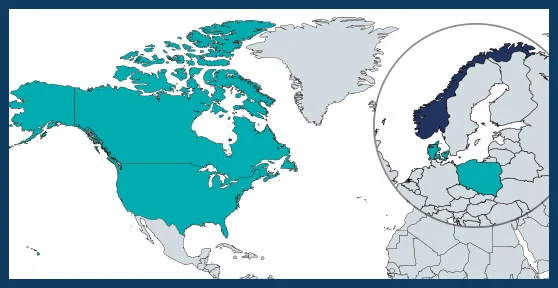12-2018 to 03-2022
€ 968,436
Janne E. Søreide
janne.soreide@unis.no
The University Centre in Svalbard (UNIS), Longyearbyen, NORWAY
Norwegian Institute for water Research (NIVA), Oslo, NORWAY
NORCE Norwegian Research Centre AS, Bergen, NORWAY
University of Manitoba, Winnipeg, CANADA
Université du Québec, Rimouski, CANADA
Arctic Research Centre, University of Aarhus, DENMARK
Institute of Oceanology, Polish Academy of Sciences, Sopot, POLAND
University of Gdansk, Gdansk, POLAND
University of Alaska, Fairbanks, USA
University of Texas, Austin, USA

Arctic coastal ecosystems are changing as climate changes and human activities increase, necessitating that government managers, industries, conservation organisations and communities have access to timely biodiversity and ecosystem status data, and if possible to plausible projections of status of biodiversity and ecosystem services over the next decades. The Arctic is characterised by an extensive coastline that constitutes 34% of the total global coasts. These near- shore waters are among the most productive regions and by far the most preferred ecotype for human settlements in the Arctic. Coastal waters are critical breeding and foraging grounds for many fishes, birds and marine mammals, and provide key ecosystem services that are vulnerable to climate induced stressors. Less sea ice, increased coastal erosion and sediment loads will physically change the near- shore bottom habitats and, thus, the biodiversity of these regions with cascading effects on food webs. Consequently, the coastal ecosystem goods and services (provisional, regulatory, socio-cultural) will also encounter changes. At present the extent of protected coastal marine ecosystems in the Arctic remains very small despite the fact that the Arctic coastal biodiversity is under growing pressure due to climate change and increased human activities.
To determine different de-icing scenarios to allow early warning of (socio-) ecological breakpoints and regime shifts and provide scientific and social science advice for sustainable ecosystem-based management of coastal regions in the high-Arctic.
ACCES comprises a strong pan-Arctic and multidisciplinary team from Norway, Poland, Canada, US and Denmark. It will synthesise existing environmental and biodiversity data and generate new knowledge from sites spanning over a wide geographical scale from the Pacific to the Atlantic Arctic. The project’s main objectives are to:
• Determine to what extent changes in hydrography, nutrient dynamics, underwater light and sediment load impact primary producers’ biodiversity, distribution and bloom phenology;
• Identify consequences of sea ice decline on nearshore metazoan biodiversity, distribution and trophic structure;
• Start dialog with relevant stakeholders to document and analyse their develop- ment strategies and knowledge-needs in light of different de-icing scenarios.
ACCES plans for close engagement with the Arctic Council as they are developing monitoring and management plans for the region and would be primary users of the projects’ outcomes. To build scenarios useful for decision-making, it is plan- ned to involve local, regional and pan-Arctic knowledge alliances during the project and invite them to a larger stakeholder workshop in autumn 2019. Towards the end of the project a combined stakeholder and research session will be organised on the topic ‘Sustainable Arctic Coasts’ during the annual, international ‘Arctic Frontiers’ conference in Tromsø, Norway.